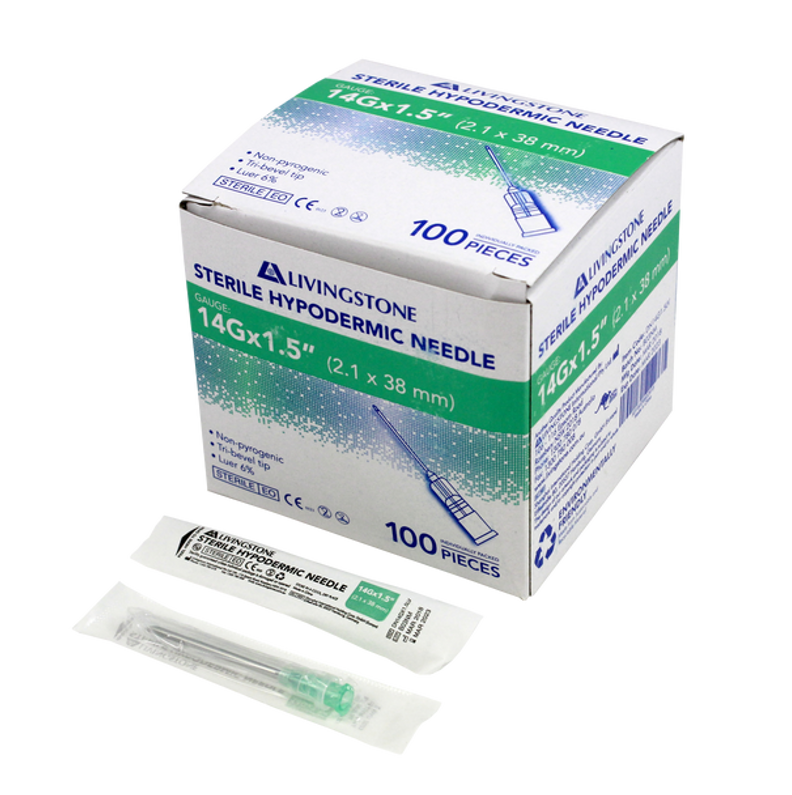Needle Gauge and Needle Length
Needles are very small and thin pieces of metal used for injections. A needle is a hollow tube made of metal with a pointed tip . In fact, it is a sterile device designed for injecting medications or withdrawing secretions from the body. When individuals can not take medicine by mouth or have difficulty digesting, they can use needles along with syringes to deliver the medicine to their body. Also, withdrawing tissue fluid from swollen joints or blood from veins are done through using a needle and its appropriate syringe.
Needle Gauge
The gauge of a needle refers to the inner measurement or the hole in a needle. Typically, needles are available in a variety of different sizes comprising 18, 21, 23,25 and so on. The higher gauge number indicates the smaller hole inside a needle and when the gauge number is lower, the hole is larger. Different gauge needles are used for different purposes. For example, the areas of the body with smaller veins often require a higher gauge needle and areas with larger veins usually require a lower gauge needle. Also, a larger gauge number is preferable when the patient has narrow, fragile or superficial veins. This will reduce pain and any damage to the blood vessel.
The gauge number of a needle is marked on the packing as G. In fact a 18 G needle refers to a needle with 18 gauge.
Needle Length
The length of a needle is marked on the packing after the gauge number. For example, an 18 G ½ needle refers to a needle with 18 gauge and ½ inch length. Also, 23 G 1 indicates a 23 gauge and 1 inch long needle. Different length needles are used for different purposes. In fact, you should choose the right-sized needle depending on the patient size ( children need a shorter needle and adults need a longer one ) and the area of the needle insertion. The type of medications used for injection also matters. Some medications can be absorbed under the skin while others must be injected into the muscles.
If you want to do Subcutaneous Injections, you need to choose a small and short needle. Because, these injections go into the fatty tissue below the skin and are shallow. Appropriate needles for such injections are usually ½ to ⅝ inch long and 25 to 30 gauge.
On the other hand, Intramuscular Injections require thicker and longer needles. Because, these injections go directly into the muscles and muscles are deeper than the skin. Needles with 20 or 22 gauge and 1 to 1.5 inch long are suitable for intramuscular injections.
The amount of body fat also matters when you want to choose a needle. A thin person often requires a shorter needle compared with a fat person.
In Table 1 below, you can find out which needle gauge and length are suitable for vaccinating different sized individuals:
| Age or Size of People Being Vaccinated | Needle Gauge | Needle Length |
| Infant, Child or adult for intramuscular vaccines | 22_25 | 25 mm |
| Preterm infant (<37 weeks gestation) up to 2 months of age, and/or very small infant | 23_25 | 16 mm |
| Very large or obese person | 22_25 | 38 mm |
Table 1: Recommended needle size for administering vaccines
Hypodermic Needle
A hypodermic needle (hypo=under, dermic=skin) is a hollow needle which is mostly applied for injection of substances into the body or withdrawing fluids from the body. When you want to take liquid samples from the body such as taking blood from a vein, hypodermic needles are highly appropriate. Also, you can use them to treat catastrophic blood loss or shock.
In order to have a rapid delivery of liquids, hypodermic needles are the best choice. They are very useful for patients having difficulty in ingesting substances orally. Hypodermic needles are greatly appropriate for requiring sterile conditions since they highly reduce contamination by preventing airborne pathogens and preventing microbes larger than the hole.
Maintenance
Since needles are sterile products, you should store them in appropriate containers. Before using needles, you have to be careful. You should ensure that they are not blunt and the packing is not torn. Because, a poor storage of the needles can lead to an exposure to air and contamination by microorganisms.
In Medisa Pty Ltd, we are supplying high quality branded hypodermic needles:
Terumo: providing conventional hypodermic needles designed for maximum sharpness, easier penetration and greater comfort for the patient.
BD: providing conventional needles available in a wide range of gauges, length and bevel designs including regular wall and thin wall offerings.
Livingstone: providing sterile hypodermic needles with recyclable polypropylene hub.
Recent Posts
-
We're Moving to a New and Improved Location!
We are thrilled to announce a significant step forward for our company as we relocate to a larger an …3rd Mar 2024 -
Tips for Keeping Your Clinic Stocked with Essential Supplies
As a healthcare professional, ensuring that your clinic is stocked …28th Feb 2024 -
Why Medisa is Your One-Stop Shop for All Your Medical Supply Needs
When it comes to sourcing medical supplies and equipment for your healthcare facilit …26th Feb 2024


